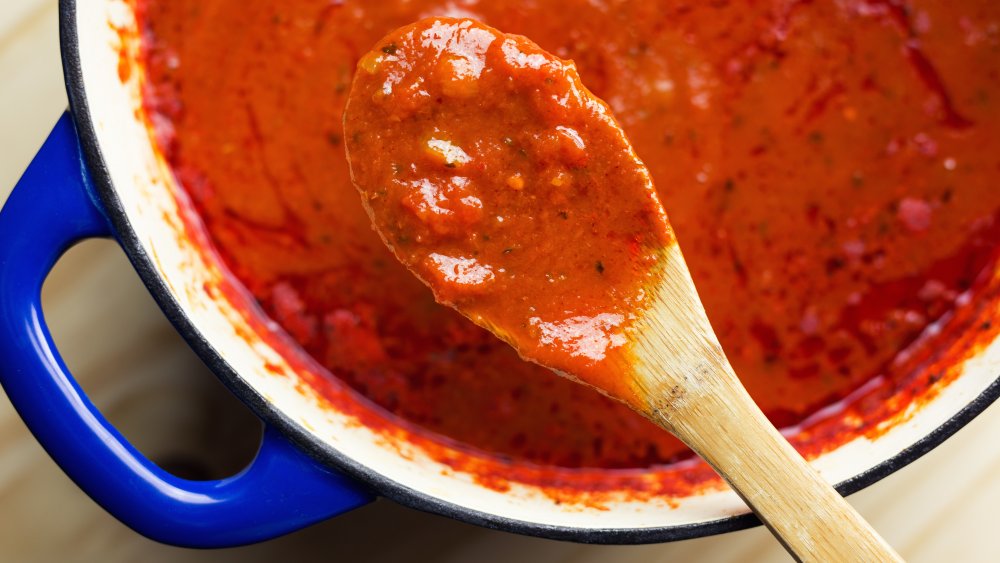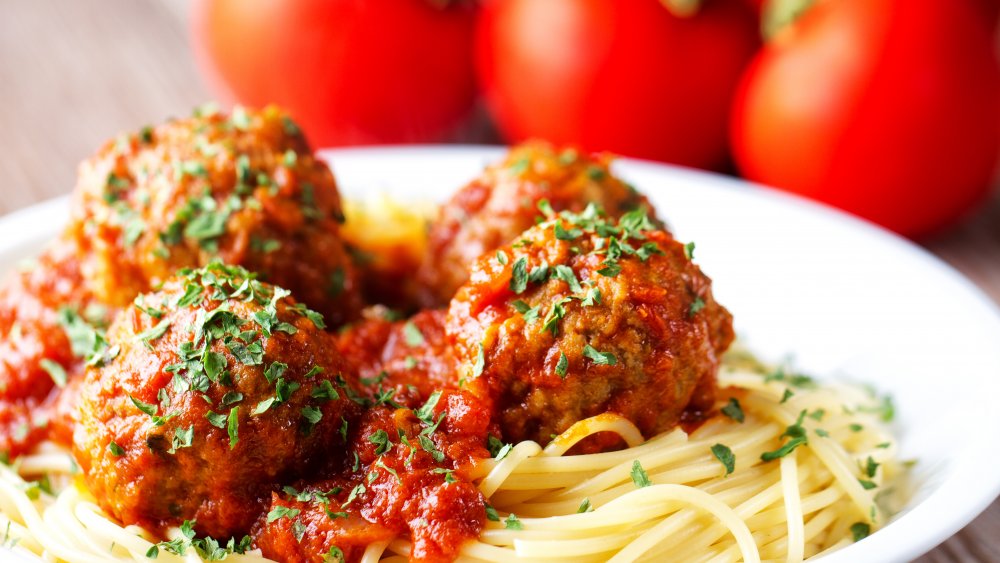The Real Difference Between Tomato Sauce And Marinara Sauce
When you walk down the pasta aisle at the grocery store, you probably know exactly what you're looking for: a tangy red sauce for tonight's spaghetti dinner. Confidently, you reach for a jar labeled "marinara sauce." But then you look to the right and see an almost identical jar labeled "tomato sauce." Suddenly, you're torn. Which one should you buy? And aren't marinara sauce and tomato sauce the same thing? Correct answer: No.
Because the two sauces look similar (and can sometimes even taste similar), we often use the names marinara and tomato interchangeably. However, the two sauces are not the same. According to Taste of Home, marinara sauce cooks much quicker than tomato sauce (often under an hour) and has a less complex flavor profile that typically simply consists of tomatoes, garlic, and oregano. Tomato sauce, on the other hand, requires hours of simmering and is made with heartier ingredients, which often include a creamy roux base, meat, and other assorted veggies and herbs. As a result, tomato sauce tends to be much thicker and more robust than its marinara counterpart.
Here's when to use marinara sauce and when tomato sauce is best
Because marinara sauce and tomato sauce both have different consistencies and flavors, they also have different uses. Marinara sauce, with its thinner texture and simpler flavor, is best for tossing with pasta or slathering on pizza crust. The lighter consistency along with the tomato-based flavor doesn't overpower the rest of the dish. (Psst: If you see a jar labeled "pizza sauce" or "spaghetti sauce," you can almost guarantee it's marinara sauce.)
Tomato sauce, which has a consistency that's more like the sausage gravy you smother over biscuits, can also be used like marinara sauce in pasta dishes or poured over meat. Food & Wine even recommends using it as a topping for eggs or seafood. However, unlike marinara, the thicker, more flavorful tomato sauce is traditionally never used as a pizza sauce. While the two sauces each clearly have unique tastes and uses, one thing remains the same — they're both delicious in their own ways.

